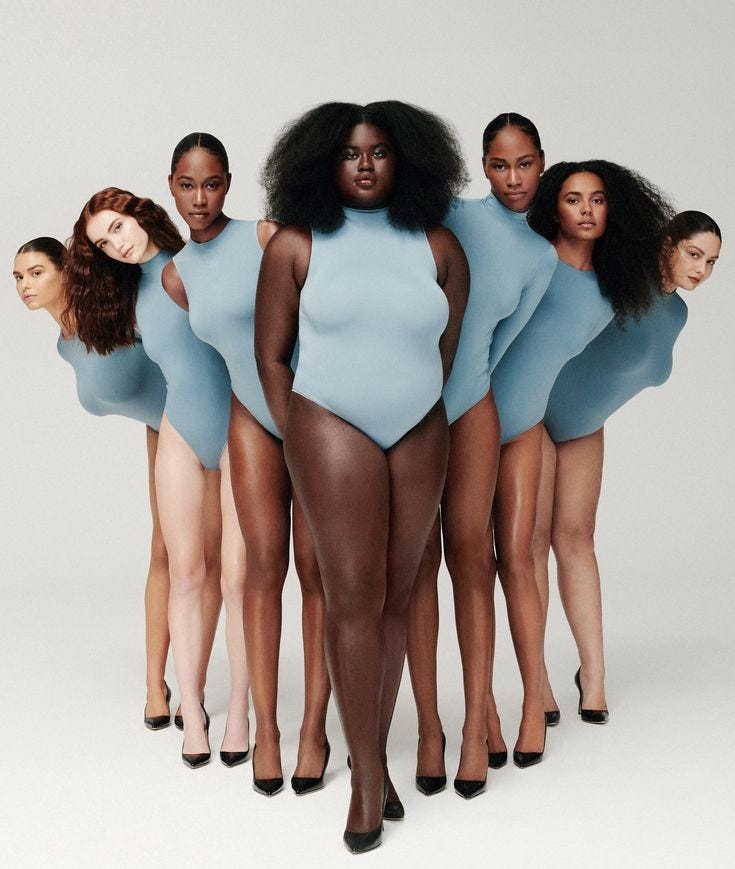Know Your People. Then Know Them Better.
Branding's two most forgotten — and most powerful — rules.
It’s one of the great paradoxes of modern brand building.
In a world where brands have more data, more access, more tools than ever before… most of them still don’t really know who they’re talking to.
They know their age bracket.
They know their postcode.
They know what time they open their emails.
But they don’t know what they order at a drive-thru at 11pm.
They don’t know what podcast they play when they can’t sleep.
They don’t know the irrational thing they always splurge on, even when money’s tight.
And that’s the difference between talking to people and knowing them.
Rule One: Know Your People.
This is Branding 101.
It always has been. Long before TikTok trends and conversion funnels and customer personas with fake stock photo names.
The brands that matter most are the brands that know us best.
Know us like:
→ The friend who can order for you.
→ The playlist that reads your mood.
→ The barista who already knows it’s an oat cap before you say a word.
This is not about data. This is about texture.
Because knowing your people isn’t just about what they buy, it’s about why they buy.
And yet… most brands skip this part.
They build for demographics, not for humans.
They think “target market” is a box to tick, not a world to inhabit.
But brands that change culture, brands that move beyond transactions into genuine, lasting relevance, always start here.
They study their audience the way great writers study character. Obsessively. Curiously. With reverence and respect.
Because that’s where the real insight lives: in the small stuff.
In the habits, the humour, the contradictions.
In what people want on their best day, and what they reach for on their worst.
Rule Two: Know Them Better.
Knowing your audience isn’t a one-and-done strategy doc.
It’s a living practice.
People change. Culture moves. Context shifts.
The best brands stay impossibly close to their people. They listen harder. They watch more closely. They let themselves be surprised.
And they never — ever — let assumptions outpace curiosity.
Because assumptions don’t build great brands. Empathy does.
Here’s What That Looks Like In Practice:
→ Less guessing. More asking.
→ Less generic messaging. More deeply specific signals.
→ Less broadcasting. More conversation.
Great branding doesn’t tell people what to want. It reflects what they already want — often before they can articulate it themselves.
It gives language to something they’ve been feeling but couldn’t quite name yet.
And when that happens? That’s when a brand moves from something you buy… to something you believe in.
The Power of Real Understanding.
Understanding your people isn’t just about being liked.
It’s about being trusted.
It’s about relevance, differentiation, loyalty, love.
It’s the reason people stick around long after the sale. It’s the reason they tell their friends. It’s the reason they forgive your mistakes.
Because in a sea of brands talking at them, you were the one that talked to them.
More than that: you got them.
What Knowing Your Audience Gives You:
→ Sharper Messaging. You stop writing generic copy for everyone, and start writing specific copy for someone.
→ Better Product Ideas. You stop guessing what people want and start solving what they actually need.
→ Distinctive Positioning. You stop benchmarking competitors, and start building worlds only your brand could create.
→ More Efficient Marketing. You stop burning budget on broad strokes, and start hitting with precision.
→ Longer-Term Loyalty. You stop being a passing trend, and start being a permanent habit.
Here’s The Real Magic Trick:
Knowing your people lets you disappear from the category.
You’re no longer competing on features or price or surface-level benefits.
You’re competing on feeling. On identity. On belonging.
And that’s the hardest thing for any competitor to replicate.
Your story becomes their story.
Your product becomes part of them.
Your brand becomes shorthand for how they see themselves.
So How Do You Get There?
1. Start Close.
Talk to your customers. Often. Obsessively.
Not just surveys. Not just Net Promoter Scores.
Actual conversations.
Ask them about their habits, their day, their dreams, their disasters. The real stuff.
Brands that listen win.
2. Zoom Out.
Immerse yourself in culture — music, fashion, language, memes, art, subcultures.
Where do your people spend time? What worlds do they move through? What ideas are shaping them?
This isn’t trend-chasing. It’s world-building.
Stay fluent.
3. Look for the Specific.
The gold is always in the details.
Not “young women aged 25-34.”
But young women aged 25-34 who save every menu from every restaurant they’ve ever loved.
Not “wellness enthusiasts.”
But wellness enthusiasts who drink green juice but still eat Shapes in bed.
That’s where the texture lives.
That’s where connection happens.
4. Build for the Emotional Job.
Every product solves a rational job.
The great ones solve an emotional job.
What’s the real job people hire your brand to do?
Make them feel calm? Cool? Seen? In control? Rebellious? Powerful? Playful?
Design for that.
Because The Brands We Love Most?
They see us before we see ourselves.
They say the thing we’ve been thinking but never said out loud.
They show up in a way that feels less like marketing… and more like a mirror.
And once a brand becomes that? It’s no longer fighting for attention.
It’s living in your head rent-free.
Final Thought:
If branding today feels harder than ever, it’s because attention is harder to earn — and easier to lose.
The good news? People still want to be known.
Really known.
Not as data points. But as people.
Know them like that.
Better still… know them like nobody else does.
That’s not just good strategy.
That’s unforgettable brand building.
Subscribe to Public Opinion for more brand truth bombs, spicy takes, and the sharp, no-fluff insights founders actually use to win.
Public Opinion is where we talk. Smack Bang is where we do. Come see what we’ve been building →smackbang.co







The idea of building for the emotional job rather than just the rational one is brilliant. I've seen many brands struggle with this transition from feature-based to emotion-based marketing.
Could you share more about how you've helped brands identify their emotional value proposition? Also, how do you measure the success of these deeper, more emotional connections when traditional metrics might not capture the full impact?
The section about "emotional jobs" is particularly insightful. I've been working on a project where we're trying to move beyond surface-level benefits to understand the deeper emotional needs of our customers.
I'm curious about your approach to gathering these insights. Do you have any specific methods for uncovering those "irrational splurges" or late-night habits that you mentioned? Also, how do you maintain this level of understanding as your customer base grows?